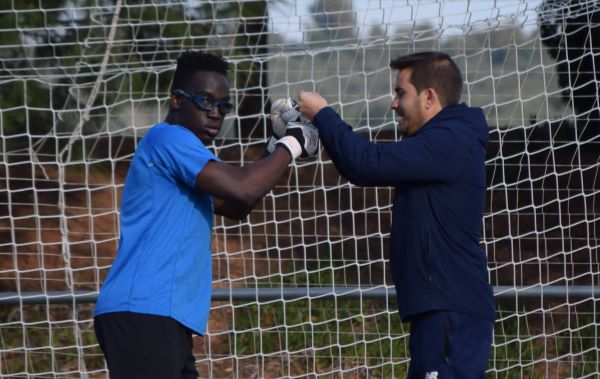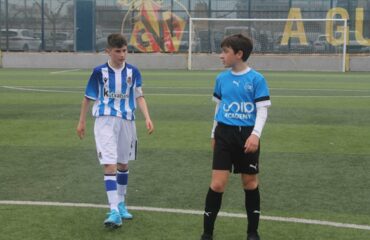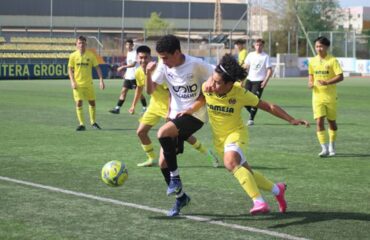CHOOSE THE RIGHT FOOTBALL GLOVE TO SUCCEED AS A GOALKEEPER
Gloves are one of the most important elements that a football goalkeeper has to have under control. Nowadays there are countless models and brands of gloves for goalkeepers that recommend their products, but which one is the best?
What recommendations are there to make sure you don’t fail in your choice? Who doesn’t remember what they felt the first time they put on a pair of football gloves? That attraction for the different is unique in the world of football and it is the seed that conquers every football player who ends up choosing the position of goalkeeper.
There is no doubt that goalkeeping is the most elusive position in the sport, as you either end up hating it or falling in love with it. But what do great goalkeepers such as Iker Casillas, André Ter Stegen, Jan Oblak, Thibaut Courtois, Santiago Cañizares, Oliver Kahn, Gianluigi Buffon and even the legendary Lev Yashin have in common? Gloves made to measure for them, with materials that are suited to their best potential as professional goalkeepers.
Who popularised the use of goalkeeper gloves?
And yes, it is worth going back to the days when the ‘Black Spider’ Lev Yashin was triumphing in the former USSR, for this goalkeeper – winner of the Ballon d’Or in 1963 – was one of the goalkeepers who revolutionised the use of gloves. In fact, it was Yashin and his spectacular performances that made the use of goalkeeping gloves popular in professional football.
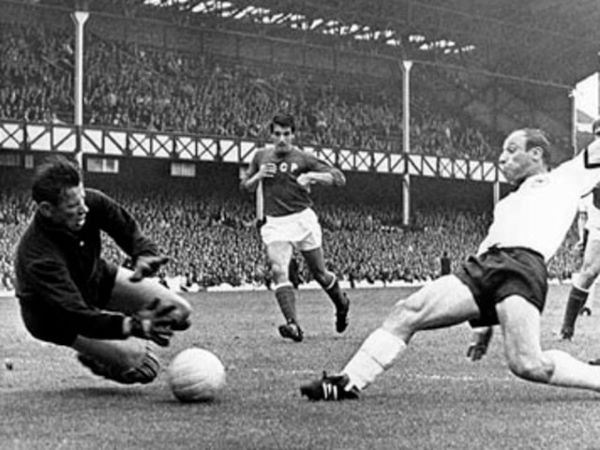
The climatic conditions in the USSR – cold, very cold – forced the ‘Black Spider’ to wear gloves in order to find more sensitivity in his hands so that he could block his opponents’ shots on goal. Of course, the success of his interventions meant that the other goalkeepers also opted to seek that precious sensitivity through the use of gloves.
What material were the first professional football gloves made of?
There were two types of gloves: wool and leather. The use of one or the other depended on the needs of each match, which is why when you look at old photographs of goalkeepers you can see football gloves that are completely black (wool) or brown (untanned leather).After that time, the world of football evolved by leaps and bounds to such an extent that its specific material became a business.
And that’s when the sports brands appeared to carve out a niche for themselves between product and product. The Mikasa gloves made of wool and rubber grafts were one of the most used by all goalkeepers, both professional and amateur, thanks to their resistance and aesthetics, as they stood out for their ‘loud’ colours: yellow, green and orange.
Mikasa’s successor was Uhlsport, which made a splash in European football thanks to its specialisation in goalkeeping. The German manufacturer dazzled every professional goalkeeper in the 1990s and set an example for the other major sports brands to follow, imitating its reinforced glove cuts and materials in order to become a fierce competitor. And so it was. Welcome to the world of football gloves.
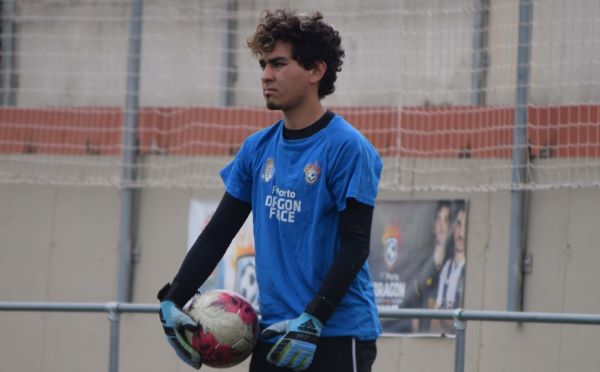
What is the most common material used for goalkeeper gloves?
We reach the commercial boom and technology starts to play a differential role when it comes to choosing one pair of gloves or another. Different types of cuts with different materials appear, making each glove model unique. Latex is the first material to become one of the most chosen by professional football goalkeepers, especially when a further step was taken with the creation of the microporous palm, the panacea of sensitivity.
In addition to the palm, different types of materials are also used for the rest of the elements that make up the glove, both on a technical and visual level – since a beautiful design attracts the interest to buy it. Everything counts, be it design, grip, resistance, palm, cuts, colours, range, etc.
This work involves hours and hours of study and research, so in order to launch the perfect glove, a whole team of technicians, seamstresses, designers and, of course, all kinds of pattern tools are needed, and once the glove is made, it is tested beforehand in different playing contexts, from professional goalkeepers, goalkeeping coaches, professionals from International Football Academies and even amateur goalkeepers or even workers from the company itself who are not very familiar with the goalkeeping position. All of this with the same objective: to gather the sensations of each person who saves a ball with this pair of gloves, which usually has between four or five models -with slight variations- in order to discard all of them except the one that is finally selected for the market.
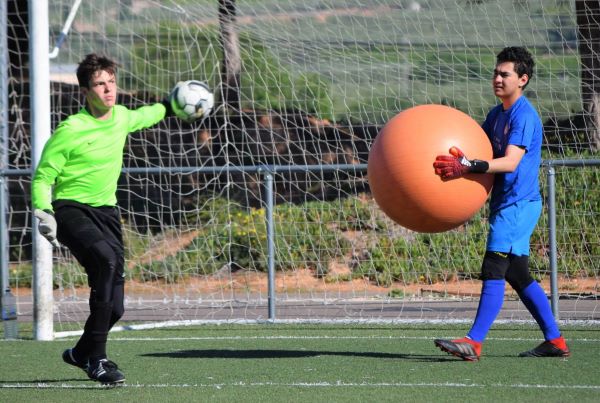
What types of cuts are there in goalkeeper gloves?
The type of cut of a goalkeeper glove is one of the factors that goalkeepers look at the most when choosing the right glove. Feeling comfortable and secure is paramount to the goalkeeper’s confidence and for this reason, different models of glove palm construction are designed. There are so many opinions that no less than five types of cut have been manufactured and consolidated in the market: Flat, Rollfinger, Negative, Hybrid and Ergo Roll.
The Flat cut
-also called Traditional or Flat- is made of two pieces of latex, each one of them is designed for the palm and the back of the hand. The palm area is completely flat and these two pieces are assembled with a breathable textile material where the innovation of this last material is what marks the evolution of this glove.
The Rollfinger cut
-also called half-cut- is synonymous with English football. The great British Premier League goalkeepers have worn this type of cut, which is also made of two pieces of latex. However, the difference with the Flat is that the palm is designed to wrap around the finger so that it can be sewn to the tip of the finger, which offers a better grip, although this makes it less sensitive when making a block.
The Negative cut
-also called Negative or Inseam- is the most comfortable of all. This glove is made with the mission of not bothering the goalkeeper at all. Therefore, it has the seams inside the glove, which makes it very technical, as it fits very tightly and gives the feeling of not wearing anything. The disadvantage is that the tighter the fit, the smaller the latex surface in relation to the ball.
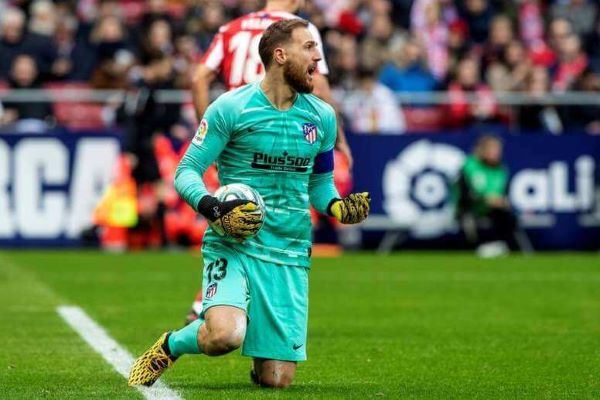
The Hybrid cut
-which is also known as Mixed, is the one that combines the rest of the cuts, especially the Negative with the Rollfinger. In this way, the middle and ring fingers are made as Negative for greater comfort and the index and little fingers as Rollfinger to improve the grip. In contrast to this, there is the Roll-Negative, which makes the glove the other way round to the Hybrid, something that nowadays sets the standard.
The Ergo Roll cut
also called frog type, is similar to the Hybrid proposal, although in this case it combines the Flat with the Rollfinger. The Flat is made for the middle and ring fingers while the Rollfinger is used for the index and little finger.
Is range important when choosing gloves?
The range of goalkeeper gloves is one of the factors that allow us to differentiate between gloves suitable for professional football and others designed for amateurs or beginners, such as children’s gloves. In fact, there are three different ranges: Professional, Semi and Basic. Let’s start with the latter.
The Basic range of goalkeeper gloves;
is a glove designed purely for beginners in the beautiful world of defending the football goal. That is to say, it is designed for beginners and younger football players, given that they are cheaper and do not have so many features that make them a long-term investment. They are usually cheap gloves These gloves are characterised by a combination of latex and foam with an approximate thickness of two millimetres. The back of the glove is made of synthetic materials and a narrow band with a single Velcro strap is used to fasten it to the wrist.
The Semi range of archery gloves;
is aimed at amateur, semi-professional football. It differs above all from the Professional range in that, despite having the same materials, the Semi has them of lower quality, something that can be seen in the type of latex used for the palm and, consequently, causes it to have less grip. The backhand is usually made of synthetic materials and contains an elastic wristband with a width of only a few centimetres, so the headband is also usually narrow. It is the most resistant glove and has a glove design for each type of pitch, i.e. one for natural grass and one for artificial turf – containing a special palm.
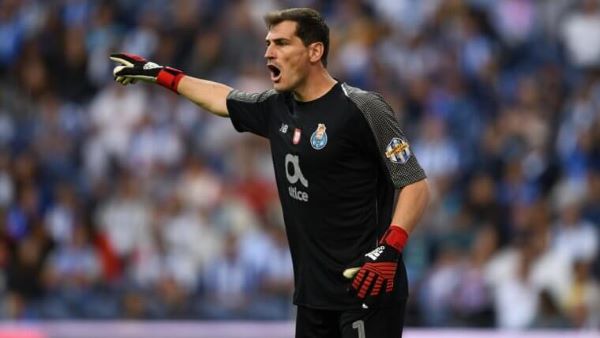
Gloves for professional goalkeepers;
Finally, there are the Professional gloves. The grip is the main feature that distinguishes this range from the rest. Manufactured mainly for a market of players who play this sport on natural grass where the use of Giga Grip latex -imported from Germany- is the most demanded. As for the backhand, the Professional range of football gloves is usually made with high quality materials, from latex, rubber grafts, anti-slip silicone and even an anti-slip inner side to avoid strange movements that limit the goalkeeper’s blocking power. The wristband used in this range is wide – so that it covers as much of the wrist as possible, i.e. seven to nine centimetres – and the strap is usually made of the same latex as the palm. In this way, a better grip is achieved by having a larger contact surface with the ball. When it comes to adjusting the glove to the wrist, Velcro, double elastic loop or even a removable strap can be used. Endless possibilities for high performance gloves.
If you want to know how our goalkeepers train and what types of gloves they use…
There is no better tool for a goalkeeper than a good pair of football gloves. Every detail counts to succeed in the elite and training in high performance requires a series of vital resources for the development of the athlete. Gloves are key for professional goalkeepers. The coaches and professionals at Soccer Inter-Action’s International Football Academy in Spain are committed to these tips.
Recommendations for choosing professional football goalkeeper gloves
For the palm of the hand, the main thing is to focus on the type of latex used by each sports brand. Knowing this, each brand labels each type of latex with a different name in order to market it as something exclusive, so you have to be prepared to know the type of latex well in order to obtain the one that provides the best grip. The most recommended latex is Giga Grip Latex -also known as Contact Grip-. The alternative to this German latex is the Pakistani National latex, a country that has earned a place among the most exported football goalkeeping equipment in the world.
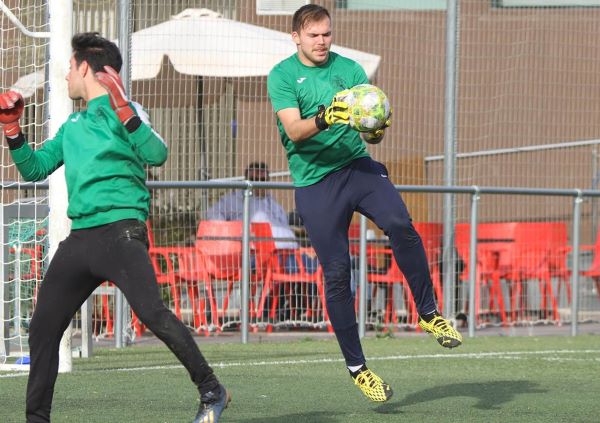
When it comes to the type of cut, deciding between one or the other can make all the difference when it comes to flawless performance. And here the choice is subjective, as the sensations of wearing one type or the other come into play. Nowadays, the Negative cut and its Roll-Negative version are the ones that are setting the trend among elite goalkeepers, but everything is relative and cyclical, as it is worth remembering that the Flat cut was for a long time the most prominent at the time for professional goalkeepers. When looking for a suitable backhand, it is important to think about the way in which the goalkeeper performs the technical gesture of striking the ball with his fists and how quickly and agilely he lifts himself off the ground from his fists.
For this reason, cushioning is a key factor, as a latex padding filled with foam generates a comfort that cannot be achieved by using synthetic materials. To make things even better, the extra features of rubber inserts, anti-slip silicone material, breathable mesh are all factors that will make the back of the gloves perfect. The headband and wristband have to be elastic and wide, something very common in all professional gloves. However, there are several materials that are used to make these elements and neoprene wristbands – alone or with a slight opening with elastic material – are becoming the most demanded due to their simplicity when placing the gloves on the hands.
As for the headband, nowadays its use has become secondary due to the fact that Velcro is not used as much, as there is a preference for glove models with straps that can be put on and taken off according to the goalkeeper’s taste. Beyond velcro or not, the important thing is to protect your wrist well with wristbands between seven and ten centimetres wide.
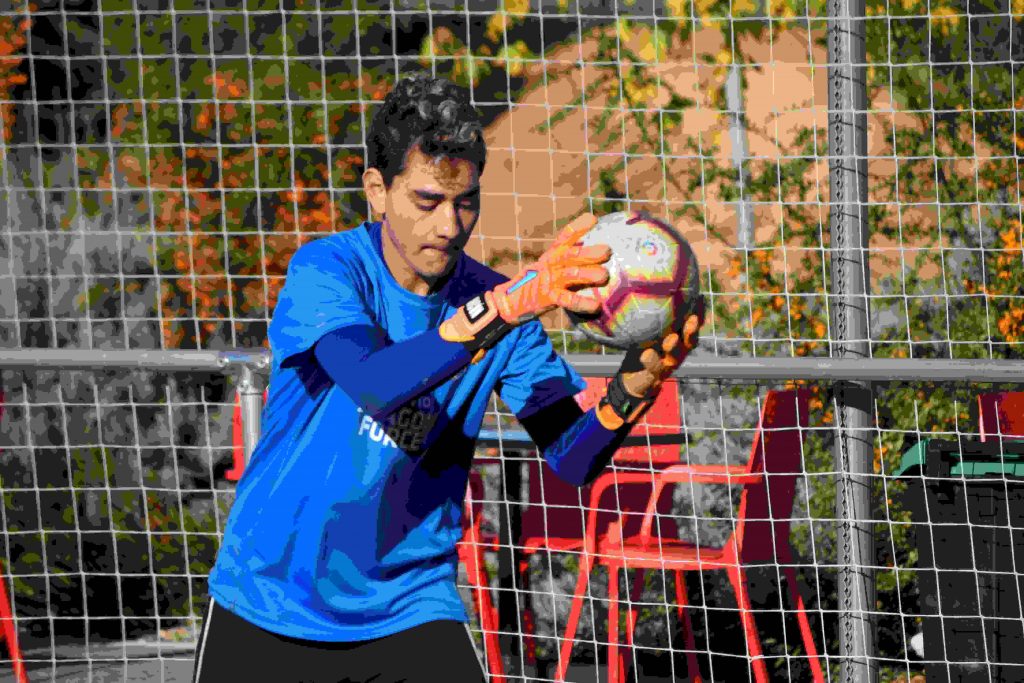
Errors in the choice of goalkeeper gloves
When it comes to choosing a pair of gloves, there is always a doubt as to whether we have chosen the right ones. It is not easy to anticipate this doubt, but these are some of the examples that condition our choice of gloves and that can make it possible for us not to choose the right ones. Design is the first thing that catches the eye. Brands know this and they all work hard to make the most beautiful gloves on the market.
And this sometimes leads to a focus on design rather than quality. So, don’t get carried away by the love at first sight of a good pair of colourful goalkeeper gloves and take a good look at all the components that have been explained above, buying online is an absolute reality and that has its pros and cons.
Going to a physical shop will give you the possibility to touch, feel and even try on all the pairs of gloves you are interested in, something that buying online will be impossible. The first contact with them is important to know your first sensations, so if you choose to buy online it is better to make sure that they have a return policy that is not detrimental to the customer.
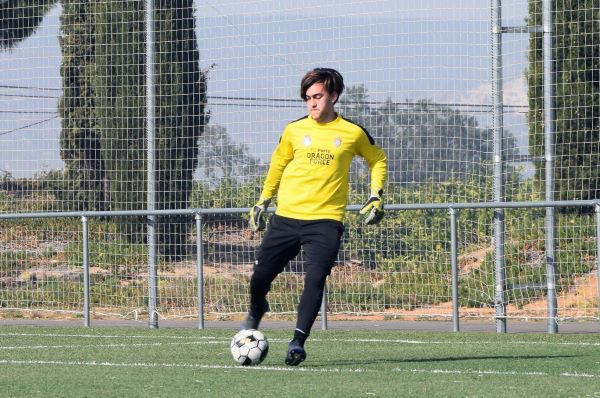
A mistake that is closely related to not trying on and feeling the glove is not knowing your size. So if you don’t know your hand size yet, what are you waiting for? The gloves have to fit your hands perfectly in order to have a better grip and avoid any mishap or even injury. In addition, if you buy online, it is very important not to make a mistake when ordering a size so as not to delay the purchase.
The glove size is crucial in the choice. Another mistake is not taking into account the surface on which we are going to compete or train. There are gloves designed exclusively for natural grass and it is a serious mistake to buy these gloves when you are going to train and compete on artificial turf. In addition to this, it is important to bear in mind the wear and tear or ball grip conditions on different surfaces, which can greatly affect the resistance and effectiveness of the gloves. Last but not least is the mistake of listening to the opinions of others.
You have to listen to the recommendations of the professionals who sell gloves and not focus so much on the feelings and experiences of others. Goalkeeping coaches are the source to turn to in case of doubt, as this will eliminate the risk of over-information and further complicate the decision to choose one glove over another.
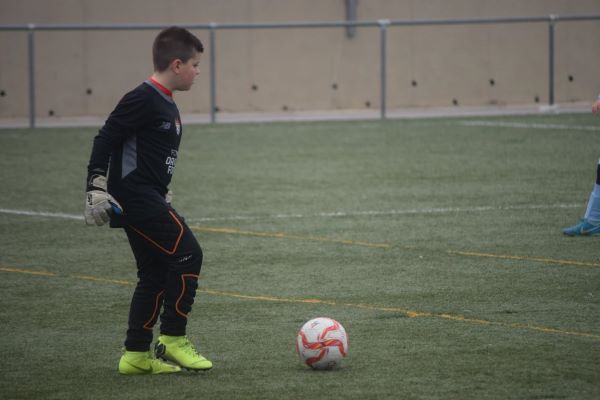
Tips for football goalkeeper gloves for kids
As we said at the beginning, the feeling of putting on a pair of football gloves for the first time is unique and it is often the one that makes a boy or girl want to become a goalkeeper. For this reason, it pays to be well informed in order to select the ideal pair of gloves for your young footballer. The first thing that comes to mind when choosing goalkeeper gloves for children is safety.
Parents are often anxious to protect their son or daughter from danger and the possibility of finger injuries due to a shot from a teammate or opponent makes the goalkeeper’s position less than desirable. For this very reason, learning about finger glove protection is important, yes, but so is educating yourself and your young goalkeeper that an injury is part of the game, it is simply that when it happens you rest until you are well recovered. Now, let’s go back to finger protection, is it advisable to use protective pads? Although there are these types of gloves that do have them, the advice is to choose a good pair of gloves without pads, i.e. gloves that do not contain them. The young goalkeeper has to be comfortable with the gloves on and these protections only make it impossible for the glove to fit comfortably on the hand. In addition, we will make it more difficult to block the ball, which can lead to bad stopping habits in the long run.
For more details on what professional coaches think about the use of extra protection for young goalkeepers, the rejection of the use of these is also generated because in the case of clearing a ball, the young goalkeeper can hurt his hand when the ball hits the glove’s internal protections, as it could get stuck, even if it is only slightly. It is not only the ball that can cause possible damage, but also the technical gesture of pushing off the ground with the fists to get up quickly.
A good part of the weight is on these protections and could also get into the goalkeeper’s hands, and an alternative to feeling more protected is the bandaging of the hands. In this way, the goalkeeper will be taught from a very young age to bandage his fingers in order to feel more protected and that this does not limit his ability to grip the ball and feel comfortable. There are also gloves with removable internal protections whose mission is to gradually accustom the young goalkeeper to play without them and to choose the option of bandaging the fingers to have a better grip.



